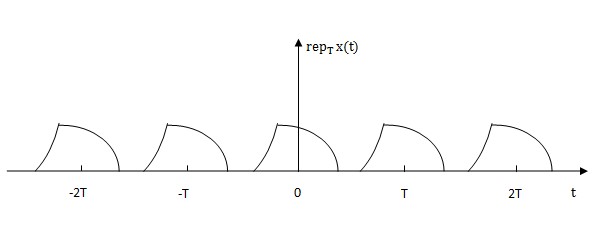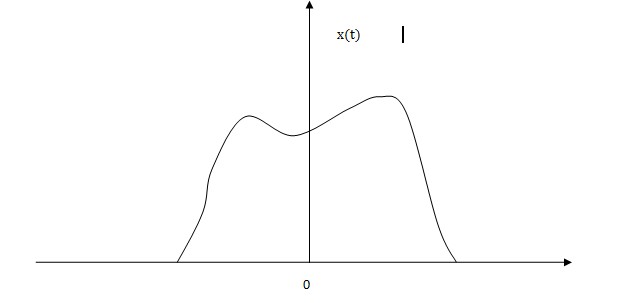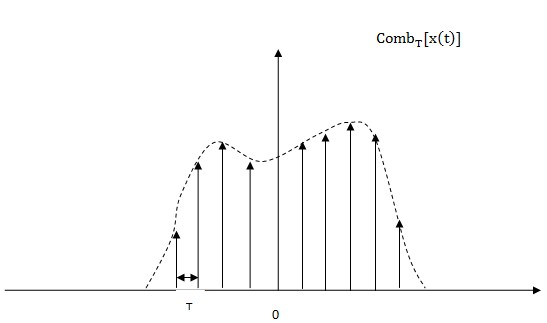| (18 intermediate revisions by 3 users not shown) | |||
| Line 13: | Line 13: | ||
Partly based on the [[2014_Fall_ECE_438_Boutin|ECE438 Fall 2014 lecture]] material of [[user:mboutin|Prof. Mireille Boutin]]. | Partly based on the [[2014_Fall_ECE_438_Boutin|ECE438 Fall 2014 lecture]] material of [[user:mboutin|Prof. Mireille Boutin]]. | ||
</center><font size=3> | </center><font size=3> | ||
| − | ----1 Outline | + | |
| + | ---- | ||
| + | ---- | ||
| + | |||
| + | 1 Outline | ||
1.1 Definition of Rep operator | 1.1 Definition of Rep operator | ||
| Line 23: | Line 27: | ||
1.1.3 Two representations of Rep operator | 1.1.3 Two representations of Rep operator | ||
| − | 1.1.4 Relationship between two | + | 1.1.4 Relationship between two representations |
1.2 Definition of Comb operator | 1.2 Definition of Comb operator | ||
| − | 1. | + | 1.2.1 Introduction to Comb operator |
| − | 1. | + | 1.2.2 Definition of Comb operator |
| − | 1. | + | 1.2.3 Two representations of Comb operator |
| − | 1. | + | 1.2.4 Relationship between two representations |
| − | |||
---- | ---- | ||
| + | |||
| + | |||
1.1.1 Introduction to Rep operator | 1.1.1 Introduction to Rep operator | ||
| Line 48: | Line 53: | ||
[[Image:rep.jpg]] | [[Image:rep.jpg]] | ||
| − | This process which is denoted by Rep operator have the same meaning as taking original function x(t) and shifting it by | + | This process which is denoted by Rep operator have the same meaning as taking original function x(t) and shifting it by kT in which <math>k \in N \quad and \quad -\infty <k< \infty</math>. |
| − | |||
---- | ---- | ||
| + | |||
| + | |||
1.1.2 Definition of Rep operator | 1.1.2 Definition of Rep operator | ||
| − | Rep operator | + | Rep operator denotes a kind of process which periodically replicates a function with some specific period T. Where the function has a finite domain of argument and the minimum repeating period T has to > a+b(a is the left boundary of the curve and b is the right boundary of the curve ). |
| + | |||
| + | |||
| + | ---- | ||
| + | |||
| + | |||
| + | 1.1.3 Two representations of Rep operator | ||
| + | |||
| + | <math>1.rep_{T}(x[t])=\sum_{k=-\infty}^{\infty}x(t-kT)</math> | ||
| + | |||
| + | <math>2.rep_{T}(x[t])=x(t) \ast P_{T}(T)</math> | ||
| + | |||
| + | |||
| + | ---- | ||
| + | |||
| + | |||
| + | 1.1.4 Relationship between two representations | ||
| + | |||
| + | <math>rep_{T}(x[t])=x(t) \ast P_{T}(T) \qquad \qquad \qquad Where \quad P_{T}(T)=\sum_{k=-\infty}^{\infty}\delta(t-kT)</math> | ||
| + | <math>=x(t) \ast \sum_{k=-\infty}^{\infty}\delta(t-kT)</math> | ||
| + | <math>=\int_{-\infty}^{\infty}x(\tau)\sum_{k=-\infty}^{\infty}\delta(t-kT-\tau)d\tau</math> | ||
| + | <math>=\sum_{k=-\infty}^{\infty}\int_{-\infty}^{\infty}x(\tau)\delta(t-kT-\tau)d\tau</math> | ||
| + | |||
| + | <math>Since \quad x(t)=\int_{-\infty}^{\infty}\delta(t-\tau)d\tau</math> | ||
| + | |||
| + | <math>So \quad rep_{T}(x[t])=\sum_{k=-\infty}^{\infty}x(t-kT)</math> | ||
| + | |||
| + | We can transform the representation with convolution formula to another and vice versa. | ||
| + | |||
| + | |||
| + | ---- | ||
| + | |||
| + | |||
| + | 1.2.1 Introduction to Comb operator | ||
| + | |||
| + | We just use the same method as the one we did previously.The graphical method is introduced as follows: | ||
| + | |||
| + | [[Image:x1.jpg]] | ||
| + | |||
| + | [[Image:comb.jpg]] | ||
| + | |||
| + | We can draw a conclusion from two figures above that x(t) is modulated by a impulse train with a period T. Just like putting a comb onto the signal and making it been 'sampled'. But this process is a little different from sampling. The continuous signal will become discrete after sampling while it will still be continuous after comb process. | ||
| + | |||
| + | |||
| + | ---- | ||
| + | |||
| + | |||
| + | 1.2.2 Definition of Comb operator | ||
| + | |||
| + | Comb operator denote a process that 'sampling' a signal by using a impulse train with a specified period T. But the signal after this process will still be continuous. | ||
| + | |||
| + | |||
| + | ---- | ||
| + | |||
| + | |||
| + | 1.2.3 Two representations of Comb operator | ||
| + | |||
| + | Comb operator is used in time domain: | ||
| + | |||
| + | <math>1.comb_{T}[x(t)]=x(t).\sum_{k=-\infty}^{\infty}\delta(t-kT)=x(t).P_{T}(t)</math> | ||
| + | |||
| + | Comb operator is used in frequency domain: | ||
| + | |||
| + | <math>2.\frac{1}{T}comb_\frac{1}{T}[X(f)]=\mathcal{F}(rep_{T}[x(t)])=\mathcal{F}(x(t)*P_T(t))=X(f).P_T(f)</math> | ||
| + | |||
| + | |||
| + | ---- | ||
| + | |||
| + | |||
| + | 1.2.4 Relationship between two representations | ||
| + | |||
| + | Both of two represents describe the nature of comb operator that is 'sampling' a signal by using a impulse train. But the difference between two represents is that the former one is defined over time domain while the latter is defined over frequency domain. | ||
| + | |||
| + | ---- | ||
| + | ==References== | ||
| + | |||
| + | [1].Charles A. Bouman, [https://www.youtube.com/playlist?list=PL3ZrjaBngMS15UhKHUnNqW5wLBA4vlQeB <span style="color:blue">CSFT and Rep and Comb Relations by video]. December 22,2012 | ||
| + | |||
| + | [2].[https://engineering.purdue.edu/~mboutin/ <span style="color:pink">Mireille Boutin], "ECE438 Digital Signal Processing with Applications," Purdue University August 26,2009 | ||
| + | [3].John G. Proakis, Dimitris G. Manolakis, "Digital Signal Processing with Principles, Algorithms, and Applications" 4th Edition,2006 | ||
| − | + | [4].Alan V. Oppenheim, Alan S. Willsky, S. Hamid Nawab, "Signals and Systems" 2nd Edition,1996 | |
| − | + | ||
| − | + | ||
| − | + | ||
| − | + | ||
| − | + | ||
| − | + | ||
| − | + | ||
| − | + | ||
| − | |||
---- | ---- | ||
---- | ---- | ||
---- | ---- | ||
| − | |||
==[[Slecture_rep_comb_ECE438_Xiaozhe_review|Questions and comments]]== | ==[[Slecture_rep_comb_ECE438_Xiaozhe_review|Questions and comments]]== | ||
If you have any questions, comments, etc. please post them on [[Slecture_rep_comb_ECE438_Xiaozhe_review|this page]]. | If you have any questions, comments, etc. please post them on [[Slecture_rep_comb_ECE438_Xiaozhe_review|this page]]. | ||
---- | ---- | ||
| − | [[ | + | [[2014_Fall_ECE_438_Boutin_digital_signal_processing_slectures|Back to ECE438 slectures, Fall 2014]] |
Latest revision as of 17:51, 16 March 2015
Definition of Rep and Comb
A slecture by ECE student Xiaozhe Fan
Partly based on the ECE438 Fall 2014 lecture material of Prof. Mireille Boutin.
1 Outline
1.1 Definition of Rep operator
1.1.1 Introduction to Rep operator
1.1.2 Definition of Rep operator
1.1.3 Two representations of Rep operator
1.1.4 Relationship between two representations
1.2 Definition of Comb operator
1.2.1 Introduction to Comb operator
1.2.2 Definition of Comb operator
1.2.3 Two representations of Comb operator
1.2.4 Relationship between two representations
1.1.1 Introduction to Rep operator
In order to understand Rep operator clearly, a graphical method is introduced as follows:
In the figure above, there is a little pulse with compact supports over a definite interval. When repeating it at capital T, We can get the following figure.
This process which is denoted by Rep operator have the same meaning as taking original function x(t) and shifting it by kT in which $ k \in N \quad and \quad -\infty <k< \infty $.
1.1.2 Definition of Rep operator
Rep operator denotes a kind of process which periodically replicates a function with some specific period T. Where the function has a finite domain of argument and the minimum repeating period T has to > a+b(a is the left boundary of the curve and b is the right boundary of the curve ).
1.1.3 Two representations of Rep operator
$ 1.rep_{T}(x[t])=\sum_{k=-\infty}^{\infty}x(t-kT) $
$ 2.rep_{T}(x[t])=x(t) \ast P_{T}(T) $
1.1.4 Relationship between two representations
$ rep_{T}(x[t])=x(t) \ast P_{T}(T) \qquad \qquad \qquad Where \quad P_{T}(T)=\sum_{k=-\infty}^{\infty}\delta(t-kT) $
$ =x(t) \ast \sum_{k=-\infty}^{\infty}\delta(t-kT) $ $ =\int_{-\infty}^{\infty}x(\tau)\sum_{k=-\infty}^{\infty}\delta(t-kT-\tau)d\tau $ $ =\sum_{k=-\infty}^{\infty}\int_{-\infty}^{\infty}x(\tau)\delta(t-kT-\tau)d\tau $
$ Since \quad x(t)=\int_{-\infty}^{\infty}\delta(t-\tau)d\tau $
$ So \quad rep_{T}(x[t])=\sum_{k=-\infty}^{\infty}x(t-kT) $
We can transform the representation with convolution formula to another and vice versa.
1.2.1 Introduction to Comb operator
We just use the same method as the one we did previously.The graphical method is introduced as follows:
We can draw a conclusion from two figures above that x(t) is modulated by a impulse train with a period T. Just like putting a comb onto the signal and making it been 'sampled'. But this process is a little different from sampling. The continuous signal will become discrete after sampling while it will still be continuous after comb process.
1.2.2 Definition of Comb operator
Comb operator denote a process that 'sampling' a signal by using a impulse train with a specified period T. But the signal after this process will still be continuous.
1.2.3 Two representations of Comb operator
Comb operator is used in time domain:
$ 1.comb_{T}[x(t)]=x(t).\sum_{k=-\infty}^{\infty}\delta(t-kT)=x(t).P_{T}(t) $
Comb operator is used in frequency domain:
$ 2.\frac{1}{T}comb_\frac{1}{T}[X(f)]=\mathcal{F}(rep_{T}[x(t)])=\mathcal{F}(x(t)*P_T(t))=X(f).P_T(f) $
1.2.4 Relationship between two representations
Both of two represents describe the nature of comb operator that is 'sampling' a signal by using a impulse train. But the difference between two represents is that the former one is defined over time domain while the latter is defined over frequency domain.
References
[1].Charles A. Bouman, CSFT and Rep and Comb Relations by video. December 22,2012
[2].Mireille Boutin, "ECE438 Digital Signal Processing with Applications," Purdue University August 26,2009
[3].John G. Proakis, Dimitris G. Manolakis, "Digital Signal Processing with Principles, Algorithms, and Applications" 4th Edition,2006
[4].Alan V. Oppenheim, Alan S. Willsky, S. Hamid Nawab, "Signals and Systems" 2nd Edition,1996
Questions and comments
If you have any questions, comments, etc. please post them on this page.





